Morning Eye Candy: An Orchid Named Easter Bunny
Posted in Around the Garden on March 31 2013, by Ann Rafalko
Easter greetings from The Orchid Show!
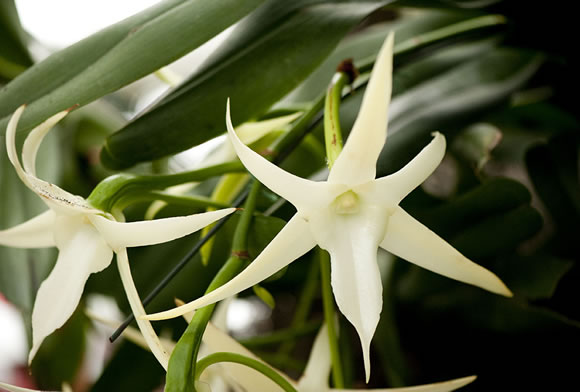 Angraecum sesquipedale ‘Waterfield Easter Bunny’ (photo by Ivo M. Vermeulen)
Angraecum sesquipedale ‘Waterfield Easter Bunny’ (photo by Ivo M. Vermeulen)

Inside The New York Botanical Garden
Posted in Around the Garden on March 31 2013, by Ann Rafalko
Easter greetings from The Orchid Show!
 Angraecum sesquipedale ‘Waterfield Easter Bunny’ (photo by Ivo M. Vermeulen)
Angraecum sesquipedale ‘Waterfield Easter Bunny’ (photo by Ivo M. Vermeulen)
Posted in Photography on March 30 2013, by Ann Rafalko
Should you partake in an Easter-themed perambulation down Fifth Avenue tomorrow, may your bonnet be as graceful and light as this delicate daffodil!
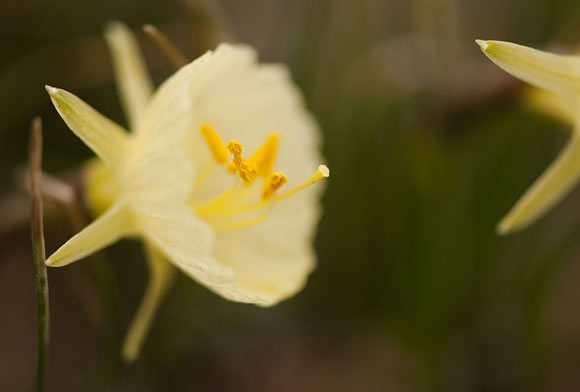
Photo by Ivo M. Vermeulen
Posted in Around the Garden, Programs and Events on March 29 2013, by Matt Newman
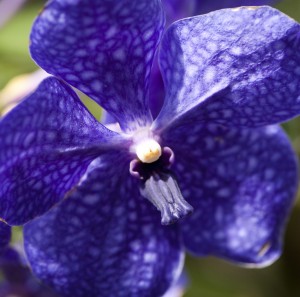 It was a little touch and go on the seasonal front over the last couple of weeks, but, with some nudging, spring seems to have settled on sticking with us! And though the hints of its arrival are subtle–crocuses, snowdrops, a few plum blossoms coloring the trees–temperatures in the mid-fifties don’t exactly scream “winter!” anymore, do they?
It was a little touch and go on the seasonal front over the last couple of weeks, but, with some nudging, spring seems to have settled on sticking with us! And though the hints of its arrival are subtle–crocuses, snowdrops, a few plum blossoms coloring the trees–temperatures in the mid-fifties don’t exactly scream “winter!” anymore, do they?
Because some of you are heading into a three-day Easter weekend, we figure it makes sense to skip the usual Monday downtime and open our doors to everyone. So if you happen to be in the city on April 1, pay us a visit! We’ll be running all of our usual Orchid Show events and activities throughout the day, and with the NYBG only twenty minutes away from Grand Central by the Metro North, there’s no excuse to veg’ out on the couch.
For the night owls among you, it’s also worth mentioning that our latest Orchid Evening kicks off this Saturday–and tickets are still available! But if you plan on joining us for an evening of cocktails and ambiance, I suggest registering quickly, as these spots rarely last long. Recent events have seen hundreds of nighttime visitors pass through our Conservatory doors, with more than a few romantic surprises between them. Check out our most recent video under the glasshouse roof!
Last but not least, I’ve got another piece of exciting news up my sleeve: the Rock Garden reopens this Saturday! It’s no easy thing to go through the whole of winter without access to this most zen of landscapes, but the reopening of the Rock Garden each March is made that much better with the return of warmer weather. When you stop by the ticket booth, see about getting an All-Garden Pass for an opportunity to see what is–without fail–my favorite space in our 250 acres.
Even if you’re not looking at a long weekend, the start of spring (finally) is cause for some fanfare–and where better to ring in the warmth? See the full schedule of events below.
Posted in Around the Garden, What's Beautiful Now on March 29 2013, by Carol Gracie
After spending nearly three decades at NYBG, and working much of that time in South American rainforests with her husband, Scott A. Mori, Carol Gracie has returned to one of her first botanical interests in retirement–local wildflowers. She is the author of Spring Wildflowers of the Northeast: A Natural History and coauthor (with Steve Clemants) of Wildflowers in the Field and Forest: A Field Guide to the Northeastern United States.
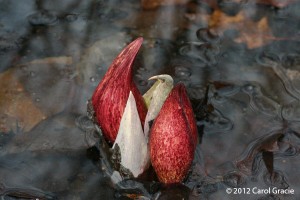
For those thirsting for some sign of rebirth after a long, cold winter, you need go no further than the closest swamp. Skunk cabbage (Symplocarpus foetidus) has been up and in flower for over a month now. In fact, skunk cabbage may be found in flower as early as mid-February in this area. While many people may not consider skunk cabbage to be a ”true” spring wildflower, that is, one that is sweet, delicate, and pastel-colored, it is, indeed, one of our native wildflowers, and a plant deserving of our attention and admiration. The floral parts have a certain sculptural beauty, and the deep maroon color is striking in the otherwise bleak landscape.
Posted in Around the Garden, Photography on March 29 2013, by Matt Newman
Keep an eye out for these saucer-shaped oddities in the Enid A. Haupt Conservatory, flaunting reds, blues, and luscious purples! Passion flowers are perhaps most fascinating for the fact that, despite looking like some of the most exotic blooms in the glasshouse, they’re really very common–there are around 400 species in their genus, many of which grow along roadsides in the U.S. In this case, “diamond in the rough” sounds about right.
And growing passion flowers at home is as easy as giving your vine or shrub a pot to grow in. Be sure that you know what you’ve got, however. Many species are considered invasive depending on the region, so it’s best to check in with a local Cooperative Extension before committing to one breed or another.
Passiflora — Photos by Ivo M. Vermeulen
Posted in Gardening Tips on March 28 2013, by Ann Rafalko
I am not one to heap praise on any woodchuck, but I refuse to place blame on poor old Charles G. Hogg. I mean, can you imagine being ripped from your cozy bed by a bunch of strangers and asked to predict the future? I am also not one to complain too much about the weather. I’m an eternal optimist, and I see in this slow spring the opportunity for an extra long blooming season when the daffodils, cherry blossoms, and tulips do finally show their faces above ground. But, that doesn’t mean I am immune to trying to force a little spring inside my apartment, and I do mean that literally.
And this was all brought to mind when Amy Weston posted a really interesting question to our Facebook wall. “I recently cut some branches from my flowering quince bush to bring inside to force,” Amy writes. “They are now blooming but they are white, not the salmon color that they are on the bush. I assume it must have something to do with the fact that they are getting something from the dirt, since they are just in water. Do you know why this would happen?” It fascinated me.
Posted in Science on March 28 2013, by Scott Mori
Scott A. Mori is the Nathaniel Lord Britton Curator of Botany at the The New York Botanical Garden. His research interests are the ecology, classification, and conservation of tropical rain forest trees. His most recent book is Tropical Plant Collecting: From the Field to the Internet.
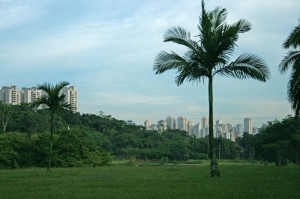
When I was in Brazil to attend a meeting on Amazonian Biodiversity in São Paulo I also had the opportunity to visit one of The New York Botanical Garden‘s sister institutions, the Jardim Botânico de São Paulo. Just like NYBG, the São Paulo garden is a refuge from the traffic, heat, and noise of life within one of the world’s megacities. São Paulo is the eighth largest city in the world with 11 million inhabitants, and the city’s 588 square miles of paved surfaces can make it feel much hotter than the reported temperature. During my visit, temperatures ranged from a pleasant 68º to a high of 90º. In the open areas of the garden it was hot enough to dampen my t-shirt as I headed for a remnant patch of Atlantic coastal forest, but upon entering the forest the temperature dropped significantly and I cooled off. I was then able to begin enjoying the plants surrounding me.
The Garden was established in 1920 under the directorship of Frederico Carlos Hoehne. The area was originally the location of the city’s waterworks and the original gate built in 1894 is preserved on the Garden’s grounds. Today the Garden consists of 85 acres of formal gardens and an arboretum dedicated to growing trees native to São Paulo and Brazil, in addition to the 1,210 acres of remnant forest mentioned above.
Posted in Photography on March 28 2013, by Ann Rafalko
The Garden’s Horticulture staff that work in the Enid A. Haupt Conservatory have a really unique perspective on the amazing plants growing within this one-acre wonderland. Recently I received a slew of beautiful portraits–including several from The Orchid Show—from Rafael Moricete Jr. and thought you might like to see a few, too.
Posted in The Orchid Show on March 27 2013, by Ann Rafalko
We call Orchid Evenings one of New York City’s most romantic date destinations. But don’t take our word for it!
Posted in Gardens and Collections on March 27 2013, by Matt Newman
After months of dedicated effort, the NYBG‘s Native Plant Garden is scheduled for a grand reopening in May of 2013. Until then, we’ll occasionally touch on the plants, landscapes, and landmark features that have gone into this classic space. Visit the official page for more information.
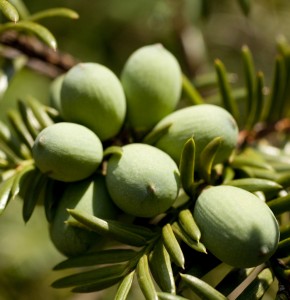 With the Native Plant Garden opening in May, it seemed only right to highlight some of the plants and trees that have gone into its reimagining. I kicked things off a while back with the Spiranthes orchids growing here and there about the space. This time around, I thought I’d go in a different direction–and highlight the only non-natives to be found in the Native Plant Garden. Stately and full with spiraled needles, the decades-old Torreya trees near the center of the garden are the only explicit outsiders to have kept their citizenship during the landscape’s sweeping revision. But before you throw your arms up in a huff of indignation, hear me out!
With the Native Plant Garden opening in May, it seemed only right to highlight some of the plants and trees that have gone into its reimagining. I kicked things off a while back with the Spiranthes orchids growing here and there about the space. This time around, I thought I’d go in a different direction–and highlight the only non-natives to be found in the Native Plant Garden. Stately and full with spiraled needles, the decades-old Torreya trees near the center of the garden are the only explicit outsiders to have kept their citizenship during the landscape’s sweeping revision. But before you throw your arms up in a huff of indignation, hear me out!
When Oehme von Sweden first envisioned the new Native Plant Garden’s layout, the Torreyas–Japanese natives, originally–were some of the more notable residents popping up in discussions. They stood three abreast, dense and squat, their thick evergreen needles shadowing what the designers pegged as the center of the new landscape. The broad path of the water feature would brush right past them on its way through the middle of the garden, so it’s not as though these conifers were inconspicuous. And that left a question: what would people think, seeing foreign growth in a native sanctuary?